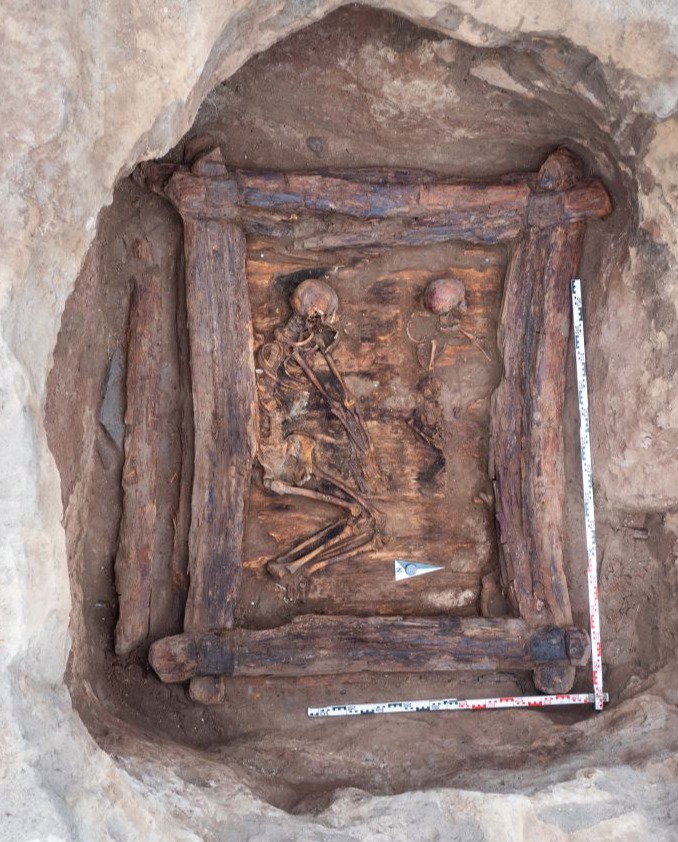Table of Contents
Toggle1. The Discovery: A 2,500-Year-Old Time Capsule
A joint Polish-Russian archaeological team excavated an extraordinary burial mound in northern Tuva. Estimated to be about 2,500 years old, the site was perfectly preserved in permafrost, safeguarding it against the ravages of time. At the heart of the find was the grave of a woman surrounded by treasures, including:
- Exquisite jewelry made of gold and bronze.
- Ceremonial weapons hinting at her possible status as a warrior or leader.
- Crafted artifacts showcasing the Scythians’ mastery of metalwork.
The burial’s preservation, coupled with the richness of its contents, places it among the most significant finds in Scythian archaeology.

2. Who Were the Scythians?
The Scythians were a nomadic people who thrived across the Eurasian steppes from the 9th century BCE to the 2nd century CE. Known for their:
- Exceptional horsemanship, which allowed them to dominate vast territories.
- Artistic achievements, reflected in intricate gold ornaments featuring animal motifs.
- Cultural connections, as they interacted with civilizations like the Persians, Greeks, and Chinese.
This burial site provides fresh evidence of their complex societal structures and rich material culture, challenging the stereotype of Scythians as mere warriors.
3. The Role of Women in Scythian Society
This particular burial raises questions about the role of women in Scythian communities. The presence of weapons alongside luxury items suggests the intermingling of martial and domestic roles. Possible interpretations include:
- A leader or warrior: Her status may have been linked to military achievements or tribal leadership.
- A high-status figure: The opulence of the grave goods might reflect her familial or societal importance.
- A religious role: Some archaeologists speculate she could have been a priestess involved in Scythian rituals.
Further analysis, including DNA and isotopic studies, may clarify her identity and the broader social roles of women in Scythian culture.
4. Permafrost: A Preservation Miracle
The region’s permafrost played a crucial role in this discovery. Organic materials, which often degrade over time, were preserved, providing rare insights into:
- Textiles and clothing used by the Scythians.
- Food remnants, which could reveal their dietary habits.
- Wooden artifacts, often lost in other archaeological sites.
Such finds allow researchers to reconstruct daily life with remarkable accuracy, painting a vivid picture of Scythian existence.
5. Broader Implications for Eurasian Archaeology
This burial site is not just an isolated find; it has broader implications for understanding the ancient world:
- Trade networks: The materials used in the artifacts suggest connections across vast regions, from the Black Sea to Central Asia.
- Cultural exchanges: Similarities in artistic styles indicate interactions between Scythians and neighboring cultures, such as the Achaemenid Persians and ancient Greeks.
- Funerary practices: The careful arrangement of the grave goods reflects the Scythians’ spiritual beliefs and reverence for the afterlife.

6. What’s Next? Future Research
Scientists are now focusing on:
- Genetic analysis to uncover the individual’s ancestry and health.
- Chemical testing of artifacts to determine their origin and craftsmanship techniques.
- Contextual studies comparing this burial to other Scythian sites to better understand regional variations in culture.
These efforts promise to deepen our knowledge of Scythian society and their role as a bridge between East and West in the ancient world.
7. Conclusion: A Glimpse into the Past
The discovery in the ‘Siberian Valley of the Kings’ reaffirms the Touran-Uyuk Valley as one of the world’s most important archaeological hotspots. It opens a window into the lives of the Scythians, a people whose legacy continues to captivate the modern imagination.
This find not only enriches our understanding of Scythian culture but also underscores the importance of preserving archaeological sites for future generations. As research continues, the secrets of this ancient burial mound will undoubtedly reveal even more fascinating stories about life on the Eurasian steppes 2,500 years ago.
